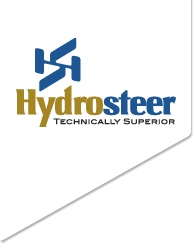Steering Wheel Kickback
In the third blog on common steering issues we discuss steering wheel kickback. In earlier blogs we have discussed Nervous Steering as well as Vehicle Darting and Wandering.
Steering wheel kickback is a really common fault in the field. After hitting a pothole, a bump or the rough edge of the road the steering wheel kicks back against the driver. This is disconcerting for the driver and has the potential to cause significant issues if the driver is not concentrating at the time.
There are typically two causes of this problem, air in the power steering system and low hydraulic flow from the power steering pump.
Air in the power steering system
Air in the hydraulic system causes steering wheel kickback. When the wheel hits a bump the steering gear piston is moved, the air in the hydraulic system rapidly compresses. This allows large movements of the piston before the hydraulic system can react and bring the piston back to the correct position. The shock movement travels back through the torsion bar and up into the steering wheel, generating steering wheel kickback.
Air in the system can be caused by leaking steering gear seals, leaking hose fittings and leaking pump seals or poor bleeding after maintenance. Some vehicles are more susceptible to air entrapment in the steering system than others, due to the orientation of the steering gear and general system design. In order to solve this problem Hydrosteer have developed a series of enhancements / Engineered Products, improving bleed-ability for these problem vehicles.
Low hydraulic Flow from the power steering pump
Low power steering pump flow can cause steering wheel kickback. The mechanism is basically the same as air in the system but the root cause is a pump with low flow. The pump is is not able to provide fluid quickly enough to prevent significant movement of the piston. The movement travels up the steering column and into the steering wheel, causing steering wheel kickback.
There are many reasons why a power steering pump may have low or inadequate flow, it could be as simple as a new engine was installed into the vehicle with a different PTO ratio causing the pump to rotate slower than before. Another cause is the incorrect pump was installed when the last pump needed replacing or the current pump’s pumping element is worn and needs replacing.
Simply changing the capacity of the pump will not necessarily solve the problem and can cause other issues down the track. If the pumping element is too large, additional heat is generated causing premature hose and seal failure, too small will lead to slow steering at idle and will not fix the steering wheel kickback issues.



No comments yet.